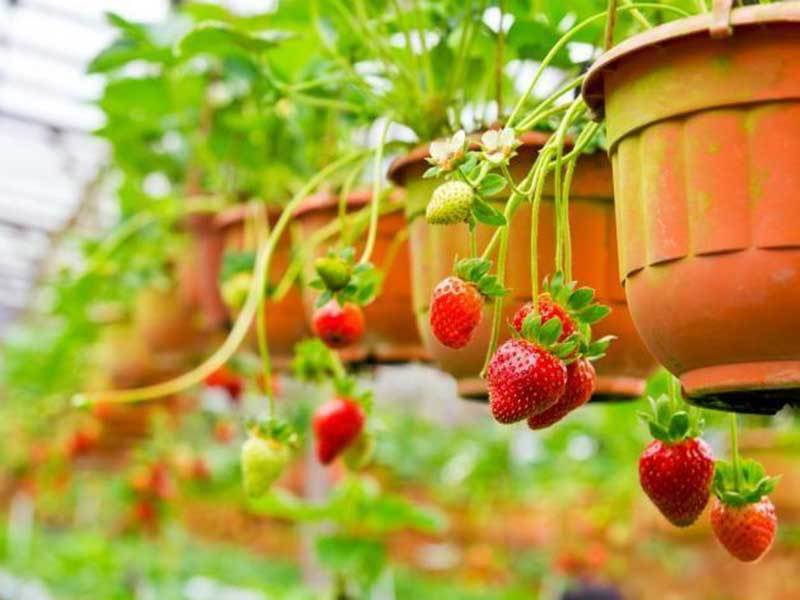The Ultimate Guide to Growing Strawberries in Missouri
Best Strawberries to Grow in Missouri
Common Strawberry Varieties
June-bearing strawberries produce a large crop once a year. This is typically in June. These varieties have large and flavorful berries.
You can harvest everbearing strawberries two to three with small crops. These varieties can offer fresh berries from late spring to fall.
Day-neutral strawberries are the most flexible variety. They produce fruit throughout the growing season. The temperature should be 35°F-85°F.
Choosing the Right Strawberry Varieties
June-bearing: Allstar and Earliglow are popular choices. Allstar offers large, sweet berries that are resistant to many common diseases. Earliglow is celebrated for its early harvest and exceptional flavor.
Everbearing: Ozark Beauty and Quinault are excellent options. Ozark Beauty produces abundant, large fruit with good disease resistance. Quinault has soft and tasty berries. It is suitable for eating fresh or making desserts.
Day-neutral: Albion and Seascape are recommended for their adaptability and consistent production. Albion yields large, sweet berries perfect for fresh consumption. Seascape provides ample harvests of flavorful fruit throughout the season.
How to Grow Strawberries in Missouri?
Soil Preparation
Make sure the pH level is 5.5-6.8. Amend your soil accordingly based on the test results. Organic matter can improve soil structure and drainage. For example, aged manure. This practice encourages deep root growth and boosts plant health.
When to Plant Strawberries in Missouri?
Early spring or late summer is the best time to plant strawberries in Missouri. The mild temperatures support their growth cycle. The northern regions are experiencing cool temperatures. The southern areas are enjoying a warm climate. This variation affects the planting schedule and variety selection.
Instructions for Planting Strawberries in Missouri
Selecting a site with full sunlight. Strawberries require 6-8 hours of direct sunlight. Space them 18 inches between each plant. The row spacing is 4 feet. The crown of the plant should be at soil level. Make sure the roots spread out in the trench. Fill in the trench and water thoroughly.
Transplanting vs. Starting from Seeds
Growing strawberries from seeds may take one year to produce fruit. Consider transplanting young plants for quick results. This method skips the germination process. You can grow robust, fruit-bearing plants.

Mulching and Weed Control
Apply mulch around your strawberry plants. This helps regulate temperature and suppresses weeds. Mulching also prevents the fruits from touching the ground directly. This reduces diseases and pests. Be vigilant about weed control. Remove any weeds by hand. Avoid disturbing the strawberry roots.
Essential Care and Maintenance
Watering Strawberries
Water strawberries deeply but infrequently. You should provide one inch of water per week. Water in the early morning is best. The leaves can dry out over the day. Soaker hoses can deliver water directly to the roots.
Fertilization Schedules
Avoid fertilizing until harvesting strawberries. This prevents excessive leaf growth at the expense of fruit production. Apply a balanced fertilizer after harvest. This prepares plants for the next growing season.
Pest and Disease Management
Regularly inspect plants for signs of trouble. For example, discolored leaves or damaged fruit. Introducing beneficial insects to control aphid populations. Floating row covers can protect plants from pests.
Consider using organic fungicides for diseases. For example, powdery mildew or leaf spot. Ensure good air circulation among plants. Crop rotation and proper sanitation prevent disease outbreaks. For example, removing old plant debris.
Harvesting and Storage
Recognizing Ripe Strawberries
Ripe strawberries will be uniformly red, without white or green areas. It should come off the stem with a gentle tug. Harvest in the cool of the early morning is best. The berries are still firm. This helps in enhancing their shelf life.
Creative Uses and Preservation
Surplus strawberries can be frozen whole on a baking sheet before transferring to a freezer bag. This preserving their taste and texture for smoothies, baking, or jams. Transform strawberries into delicious preserves if you are interested in canning.
Troubleshooting Common Issues
Poor Fruit Set
One of the first problems you might encounter is poor fruit sets. This can result from various factors. For example, inadequate pollination or extreme temperatures. Ensuring your strawberry plants are well-pollinated. You can attract natural pollinators to your garden.
Fungal Diseases
Gray mold can cover leaves and fruits with mold. The berries will rot. You should improve air circulation around the plants. This can significantly reduce these diseases. Apply organic fungicides early in the season, before symptoms appear.

